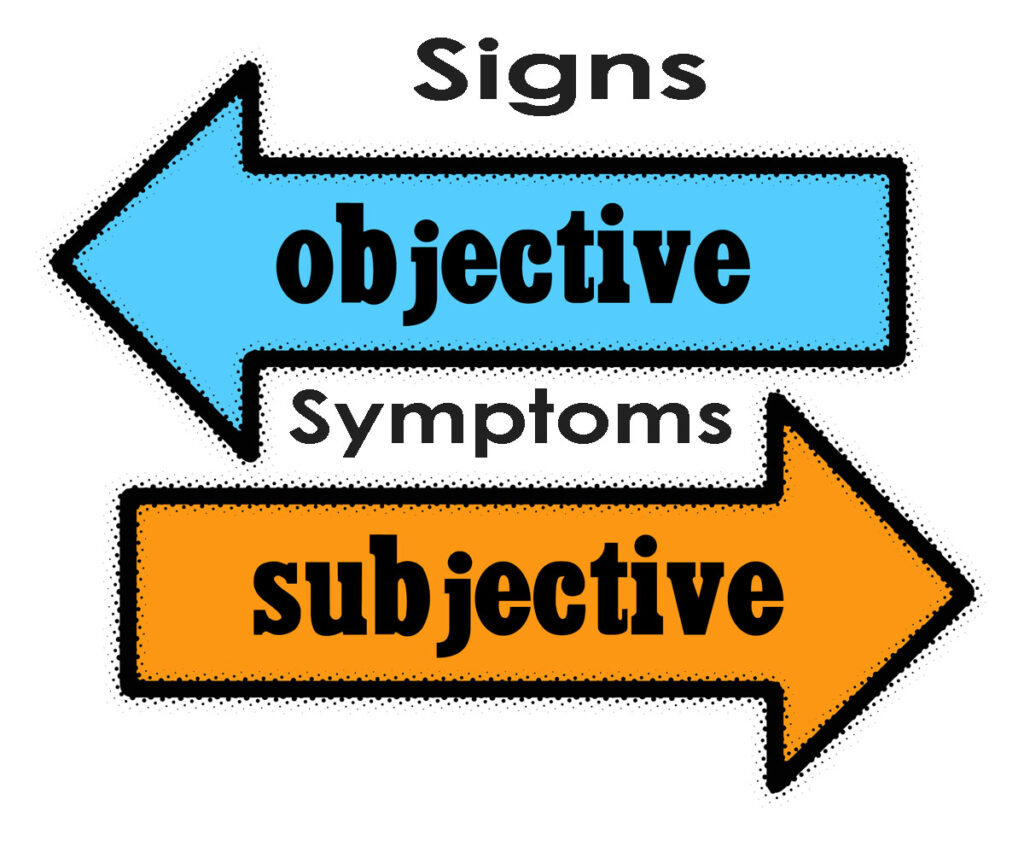Using symptoms &/or sign modification procedure to manage musculoskeletal pain syndrome

The symptom modification procedure is a clinical reasoning process and is a common practice in the Physical Therapy profession. The symptom modification procedure involves identifying the specific movement, posture, and/or activity that reproduces the patient’s symptoms. Typically, the symptom is pain, which can be weakness, falls, or other functional limitations. Then intervening to alter the symptoms.

This procedure assumes that the symptoms and signs are the same thing. Signs and symptoms are similar, but they are also different. It depends on whether you are the individual experiencing the symptoms or the healthcare provider observing the signs.
Symptoms are what the individual sees, feels, and hears. Symptoms are subjective experiences reported by the individual.
Signs are what the healthcare provider sees, feels, and hears. Signs are objective observations made by the healthcare provider.

Because of this distinction, there are times when using a “Symptom Modification Procedure” is not possible.
If the pain symptom is not elicited during the standard clinical examination procedure, it cannot be modified during the session/visit.
However, using clinical examination procedures movements, postures, or activities may provide signs of movement deviations the clinician can see, feel, hear, which can be painful. Then intervening to alter the signs of movement deviations that can be painful and to facilitate healing and prevent the recurrence of pain is a “Sign Modification Procedure”.
Unlike the symptom modification procedure where altering the performance of a movement can decrease or alleviate the symptom of pain within the session/visit, the sign modification procedure can decrease or alleviate the symptom after the session/visit. The response to the intervention takes time to observe.
In the video below the step/stride length is a relatively long step/stride length with a relatively slower cadence (steps/minute). Too long a step length is a gait deviation. It can be a sign that a healthcare provider can see.
Too long a step/stride length can be a contributing factor to the symptoms of heel pain, shin, pain, or knee pain.
In the second video below the individual is given a cue prompt to consciously take shorter steps. An alteration of the sign of too long a step occurs. The speed of the treadmill stayed the same. Therefore, the cadence increases (number of steps per minute).
If the individual is experiencing heel pain, shin pain, or knee pain, and when walking with too long a step/stride this altered movement deviation by taking shorter steps/strides decreases or eliminates the pain it is a symptom modification procedure.
If the individual is not experiencing heel pain, shin pain, or knee pain during the examination this is an example of a sign modification procedure. Sign Modification Procedure is an option. The hypothesis that needs testing is if the individual consciously alters the sign of too long steps and walks with shorter steps and more steps per minute then healing facilitation and elimination or decrease in pain occurs after the initial visit/session.
Technically if the individual is not aware that his/her habitual gait pattern is relatively too long/step stride it is not a symptom. However, if he/she is shown a 2D video recording of his/her step length/stride, then it becomes a symptom, and modification can occur. Not a symptom of pain, but a symptom of gait deviation.
I am suggesting a more accurate description or terminology of the clinical reasoning process Symptom Modification Procedure is the terminology of Symptom and/or Sign Modification Procedure.
The information on this website is not intended or implied to be a substitute for professional medical advice, diagnosis, or treatment. You are encouraged to perform additional research regarding any information contained available through this website with other sources and consult with your physician.
Damien Howell Physical Therapy – 804-647-9499 – Fax: 866-879-8591 At-Home, At Office, At Fitness Facility – I come to you, I do home visits Damien@damienhowellpt.com
